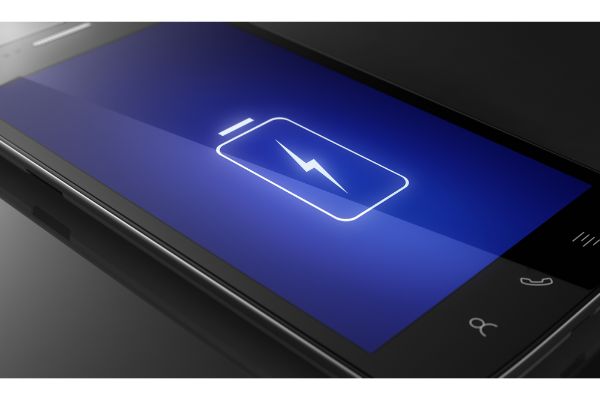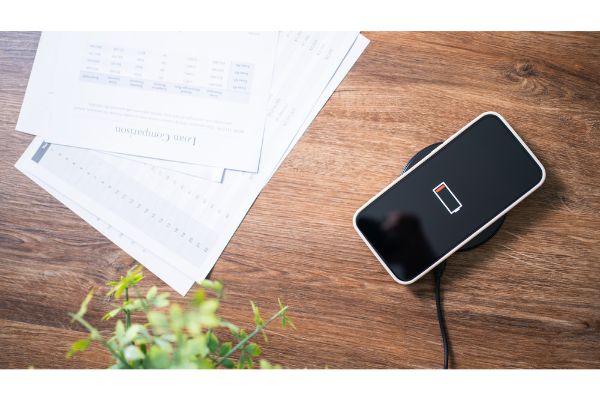Disclaimer: This post may contain affiliate links, meaning we get a small commission if you make a purchase through our links, at no cost to you. For more information, please visit our Disclaimer Page.
Smartphones are some of the most useful and versatile consumer products that have been made available in recent years. An upgrade from the more traditional cell phones that were mainly for calling and texting, smartphones can do all of that and more. They are great for allowing internet access, and they can run a variety of useful apps or fun games.
However, all of these functions require access to the main display screen on the smartphone. Some users may wonder just how much battery the display itself might use while the phone is powered on and active.
Although this can vary from one phone model to the next, we’ll attempt to answer some questions about the display and its relationship to battery usage.
Table of Contents
Does Always on Display Use More Battery?
Always On Display—sometimes abbreviated as AOD—is a feature on some smartphones. If you have a smartphone that has this capability turned on, it should enable you to view certain information on the front of your screen even when the display is turned off.
In most cases, this information would include things such as the date, time, pop-up notifications you might have received, or calls that you missed. There are settings for AOD, and you may be able to activate more features or widgets to display when the phone is turned off by adjusting these settings.
Some smartphone users may wonder if having AOD active could use more battery than just leaving the display on a normal setting. In truth, AOD will have to use a little more battery than the phone would otherwise in order to keep some display features active.
However, the important thing to remember here is that it should not use a great percentage of the battery life just by having AOD active by itself. Regular use of the phone and having the display fully active during your operations should drain the battery much more, although this is to be expected.
In general, you might see a battery drain of less than 1% more than what you might expect to see if AOD was not active. Although this can vary between specific phone models, the extra drain brought on by AOD should not be significant by itself. If the drain was too high, it might defeat the purpose of having the feature available to use at all. It is important to remember that battery drain percentages for AOD can change depending on how you configure the settings in it.
For example, you can set the AOD time to only run at a certain time of the day for a few hours at most. Doing this may help to reduce the small battery drain even further.
To keep battery drain from AOD at its lowest, there are some rules of thumb you can keep in mind:
- Just having a couple of simple notification widgets or a clock active should not drain the battery much.
- Not having the feature active all the time can help conserve battery power.
- AOD supports custom imagery or wallpapers as part of the effects that can stay on. Graphically intense displays like this may drain the battery quicker.
How Much Battery Does My Smartphone Display Use?
If you’ve read some of our other articles on technology before, you know that a lot of things in this field depend on a variety of factors. The same holds true for smartphone displays and their use of the battery.
There is no single answer for this, and it can depend on things like your phone model, battery specs, screen settings, or other things. It’s also going to be heavily dependent on how much you’re actually looking at or using the screen throughout a given time period.
If the phone is mostly idle throughout the day, you should see less drain by the screen when you check inside your phone’s settings.
All that said, it is normal for your phone’s screen to be one of the system processes that uses battery power the most. Even in comparison to many apps you might run in the background, the phone’s display will probably use a higher percentage of energy.
The display is always doing something in the background to be able to show you notifications and various widgets, and it will need energy to run as long as the phone is in its active state.
Even if we don’t know exactly how much power your smartphone display uses, there are a few comparisons we can make here:
- Having the screen active and doing things on your phone will drain the battery quicker. This is true even if you aren’t using apps that are heavy in resource demands.
- A screen with high brightness settings will use more battery power than one with lower settings.
- A screen with a longer timeout mode will use more energy than one with a shorter timeout. The timeout is the time it takes for your screen to dim and then switch off after you’ve clicked your last button and put it down.
- Physically larger displays tend to drain batteries quicker than smaller displays, but larger phones usually come with increased battery sizes to compensate for this.
In short, your phone’s display is one thing that needs the most energy. The screen will use as much power as it needs to depending on the settings you’ve chosen and a couple of other factors.
Why Is My Phone Screen Consuming Too Much Battery?
There could be multiple reasons your screen is consuming what seems like an unusually high percentage of the battery power in your smartphone. If you go into the ‘Settings’ area of your phone and scroll down to ‘Battery’ or a similar heading, you should be able to get into the app that monitors your battery’s overall performance.
From here, you can see which apps or system settings are draining your battery the quickest. If your phone is idle much of the day, the ‘Display’ or ‘Screen Idle’ or similarly worded options may be at or near the top of this list.
It might not be abnormal to see the screen listed as one of the higher options here, but the display could use far too much of the battery throughout the day when it is idle. If your phone’s battery seems to drain quite fast even though you haven’t been using it much in the space of several hours, there could be a problem with the screen consuming too much of the battery’s energy.
Precise percentages are hard to pin down, but your phone’s display should not, for example, be consuming half the battery or even close to that just by sitting around.
One possible reason for a quick battery drain like this could be the way your phone’s display settings are configured. You have options for setting the display at different levels, and there are some choices here that could be more intense with your battery’s resources.
Turning down some of these things can help to extend your battery life and keep your display from eating it up. We will show you some of the possible settings you might be able to adjust in our next section.
Another possibility for inordinate battery drain is that the battery itself is experiencing some issues. In these cases, it could be down to a defective or dying battery, or it could result from issues with the software that calibrates the battery. We’ll discuss both in more detail below.
However, it is important to realize that screens do tend to be one of the system apps that can drain batteries the most. For now, this is just the nature of how smartphone technology works with respect to screens. We can mitigate this issue, but the screen needs its juice.
5 Ways To Decrease Screen Draining Battery
We’ve discussed how much energy an average smartphone screen might need to use throughout the day. Further, we’ve gone through some of the effects of the Always-on-Display as they might relate to battery usage. There are also some possible issues with defective batteries that could cause an inordinately high drain rate. However, under most circumstances, there are also ways you might decrease the screen’s power to drain the battery.
1. Decrease the brightness levels.
Although you don’t want the screen to be so dim that you have to strain your eyes to see anything, it is possible that you don’t need the screen at the max brightness setting. Go to the ‘Settings’ section of your phone and find ‘Display’. From there, you’ll usually be able to adjust the brightness level of your phone’s display using a sliding scale option. Experiment with this to find the level that is the least bright yet most comfortable you can handle.
2. Decrease the screen timeout.
For most smartphones, screen timeout seems to be set anywhere between 30 seconds and a full minute. It is possible that you don’t need the screen to display anything for nearly this long once you are done using the phone. Once again, you can adjust this feature in the ‘Display’ area of your ‘Settings’ menu.
3. Turn on the power saver mode.
If you want to extend your phone’s battery life in general, you can check for this feature in the ‘Device Maintenance’ or similar area accessed through ‘Settings’. Power saver usually has options for mid-range and high-range energy saving. Once you click on one of these, it will show you what actions it will take to boost battery performance. You can opt to turn it on if you are okay with the power saver’s choices.
4. Remove live wallpapers.
Live wallpapers are essential moving wallpapers or backgrounds that look like videos playing. As you can imagine, this uses way more energy for the display than a standard image. Consider turning this feature off to reduce how much battery the display needs to use.
5. Lower the refresh rates.
Some smartphones might support higher and lower refresh rates. If your phone supports quite a high refresh rate, you may be able to customize it to use one that doesn’t drain the battery as much.
Bottom Line
Smartphone displays give us crisp images, clear videos, vibrant graphics for video games, and much more. With all of this power, they can also be a bit hard on the battery at times. Displays need some energy to give us the best performance possible, but they might be taking more than is ideal depending on what settings we allow for them.
Making some minor adjustments to the features the screen can use may help users see some nice gains in their battery life.


